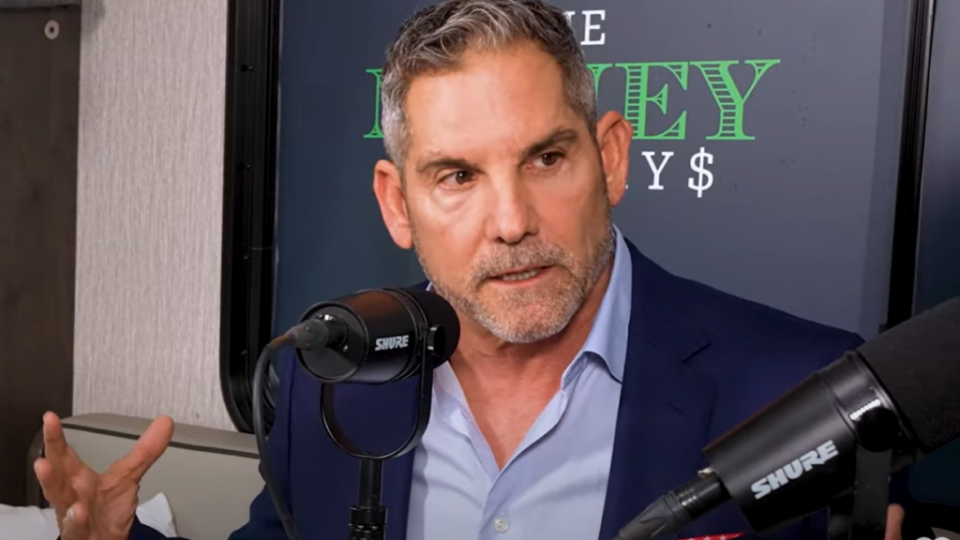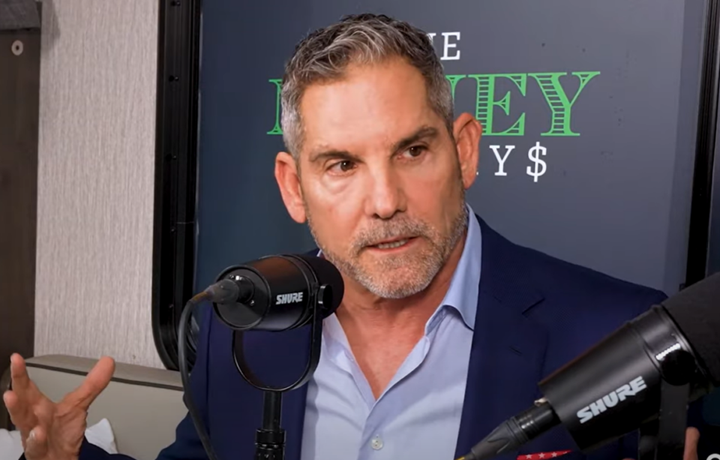
Benzinga and Yahoo Finance LLC may earn commission or revenue on some items through the links below.
Real estate investor Grant Cardone is no stranger to controversy. He frequently opines on the housing market, particularly the belief that owning your home is not an investment but instead can be a liability. His most recent statement may ruffle even more feathers as he sees something major about to happen in the real estate market. Speaking with Fox Business, Cardone said: “We are going to have the biggest real estate correction we’ve ever had in the next 12 months. It will be a monster and it will hit Gen Zs in a way that they’ll never touch that asset class again.”
Don’t Miss:
We don’t know whether Cardone can predict the future, but let’s look at how significant a correction would have to be to be the biggest. The frame of reference for recent real estate corrections is the Great Financial Crisis, which cratered home values and caused widespread foreclosures, causing widespread economic distress. In 2009, the foreclosure crisis peaked, with 2.8 million properties receiving a foreclosure notice. Home prices were down by over a fifth from 2007 to 2011. The most recent National Association of Realtors data pegs the existing home price at $419,300. A 20% drop would take that number down to $335,440. A 30% decline would bring the number down to $293,510.
Where The Market Stands Now
Rising interest rates have slowed the housing market down in 2024, and existing home sales fell by 2.8% year over year in May. With the current mortgage rate around 6.7%, monthly payments are much more expensive than they were several years ago.
Since 2013, home prices have steadily appreciated, sometimes by as much as 18% or more. This has allowed owners to gain significant equity in their homes. Many of these buyers got in before interest rates started going up. The July ICE Mortgage Monitor Report states that 76% of current mortgage holders have a mortgage that is below 5%. Because they have such a low mortgage rate, many are unwilling to sell and move into a home that they would have to finance at a higher rate.
Because of these factors, one crucial detail that distinguishes this current situation from the Great Financial Crisis is that, so far, foreclosure rates remain below historical levels. The Q1 2024 U.S. Foreclosure Market Report from Attom Data revealed that while foreclosure filings are up 3% from the last quarter, they are down less than 1% from a year ago. As Rob Barber, CEO at ATTOM, noted, “Homeowners continue to hold significant equity, contributing to a persistently hot housing market.”
One of the markets hardest hit during the last downturn was Florida. The Sunshine State saw its homeownership rate peak at 72% in 2006 before falling back to 65% in 2014. There are signs that the Florida market is weakening again as inventory rises and home sales slow. According to Redfin data, home sales are down by 15.2% in the state, and the median time on the market is up by 16 days. Longer days on the market are often a sign that buyers aren’t eager to purchase at the current prices. The number of homes for sale is up 39.2%. The number of homes sold above the list price has fallen while the number of homes with price cuts has increased. All of this points to a market that is experiencing some pain.
Don’t miss out: this property type is nearly recession-proof — see passive income real estate deals for accredited investors.
This Isn’t The Last Crisis, It’s An Opportunity
Cardone isn’t worried about the single-family market, although he doesn’t always see it as the best place for investors to put capital. Cardone sees the weakness in the multifamily market. He sees major institutions releasing assets in a moment of “true generational wealth distribution from institutions to everyday people if they would get their attention off the single-family home that doesn’t cash flow and doesn’t appreciate at the same level that larger apartment complexes do.” He sees this as a chance for people to pick up these apartment complexes because these larger institutions have to release them. After all, the loans are coming due.
Data from Yardi Matrix supports Cardone’s assertion. Over the next five years, as much as $525 billion in multifamily debt is due, $146 billion of that within the time frame Cardone suggested. If, as he forecasts, these properties end up on the market rather than being refinanced, that could cause the price for multifamily properties to fall quickly. Multifamily rental rates have stabilized recently and even decreased in some oversupplied markets. The multifamily delinquency rate is increasing but far below other commercial real estate asset classes.
The unknown factor is interest rates. Suppose rate cuts come slowly, and banks are unwilling to finance at favorable terms. In that case, it becomes more likely that Cardone’s prophecy will come true and multifamily properties will hit the market. If interest rate cuts come more quickly and banks set favorable terms, many institutions will be more likely to hold onto their assets. So far this year, multifamily buildings have not been selling rapidly. First-quarter data from RealPage shows that overall sales volume was down 25% year over year and at the lowest level since the pandemic. That number could shift if delinquencies increase and owners feel pressured to sell. We will have to wait and see if Cardone has gotten it right.
Are You Missing Out On Higher Yields?
The current high-interest-rate environment has created an incredible opportunity for income-seeking investors to earn massive yields, but not through dividend stocks… Certain private market real estate investments are giving retail investors the opportunity to capitalize on these high-yield opportunities and Benzinga has identified some of the most attractive options for you to consider.
For example, the Jeff Bezos-backed investment platform just launched its Private Credit Fund, which provides access to a pool of short-term loans backed by residential real estate with a target 7% to 9% net annual yield paid to investors monthly. The best part? Unlike other private credit funds, this one has a minimum investment of only $100.
Don’t miss out on this opportunity to take advantage of high-yield investments while rates are high. Check out Benzinga’s favorite high-yield offerings.
© 2024 Benzinga.com. Benzinga does not provide investment advice. All rights reserved.
This article Grant Cardone Sees A Massive Real Estate Correction Coming, Here’s Why It’s Different From The Last One originally appeared on Benzinga.com















